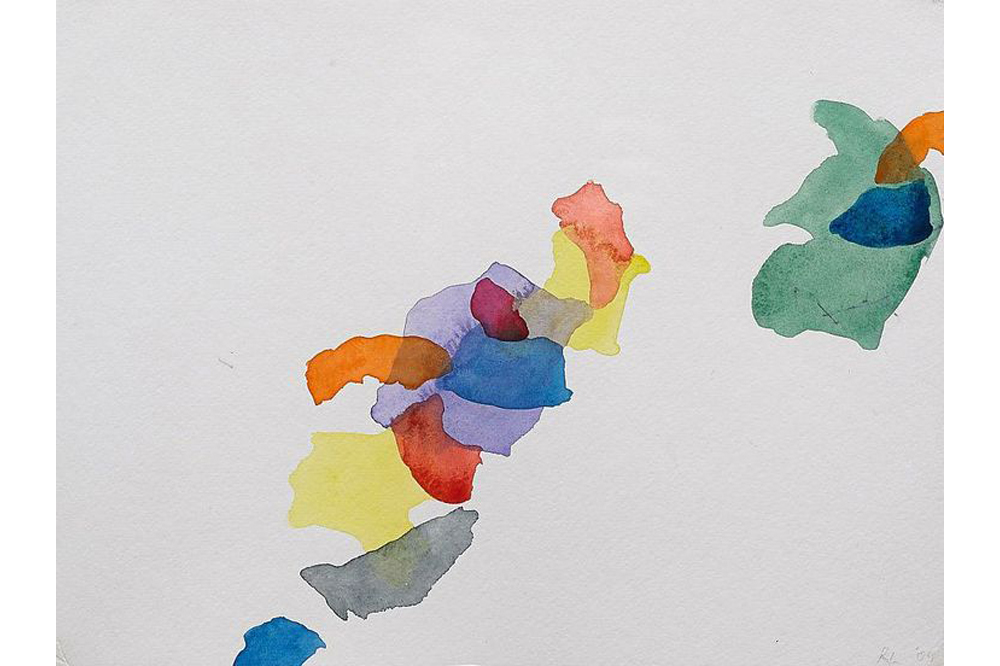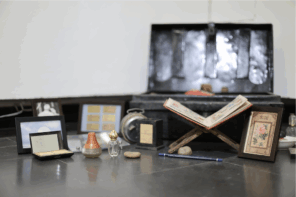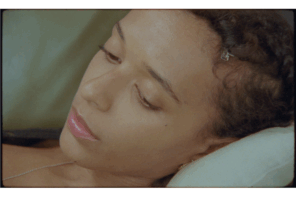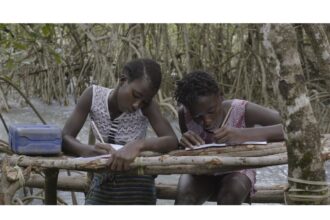At an artist talk several years ago, I asked Robert Linsley to explain why artworks should be treated as human beings. Seemingly embarrassed, he replied: I’ve “said some crazy things, and you’ve just pointed one of them out.” I believe he thought I was making fun. I wasn’t.
For an art student searching a route between codified institutional critique and rear-guard formalism, Linsley’s words felt refreshingly strange and radically hopeful. Through the intervening years, I periodically looked forward to picking up the conversation. On February 2nd that meeting was postponed indefinitely when Linsley was killed by a passing motorist in Waterloo, Ontario. His death has left a deep hollow, both in art and the discussions around it. Fortunately, we don’t have to say goodbye to Robert just yet. Prior to departing, he had published a new book, capable of sustaining a lifetime of colloquy.
Titled Beyond Resemblance: Abstract Art in the Age of Global Conceptualism, the book is a complicated gift. Linsley had a bone to pick with contemporary art’s erasure of immanent experience. “Well-intentioned and all-too intelligent” art professionals, he writes, have created “a plague of preconceived meanings,” most often oriented around social or political critique. His own studio practice was itself an attempt to cure this blight. He made abstract paintings comprised of randomized archipelagos of color. Although his own hands poured these watercolor and enamel islands, Linsley believed that the paintings made themselves; that paint flowed with a mind of its own. This compulsion to encounter art as a complex entity shifts the register of his book from disinterested analysis to self-implicated search.
The return to embodied experience is one of art’s tritest clichés. Understanding this, Linsley hedges his argument, “seeking a level of experience before language, or at the very least outside of existing theories, critical categories [and] art historical schemas.” Throughout the book, this sort of nuanced articulation counterpoints staunchly-staked positions. His search for art’s intrinsic power is met on almost every page, by knowing predictions of the resistance he will inevitably meet. Informed by deep readings of Hegel and Adorno, this dialectical mobility forms the structural character of his book.
Linsley opens Beyond Resemblance with the great painting slasher, Lucio Fontana. He wants us to understand that Fontana’s incised canvases “sat on a watershed moment,” as painting transitioned from an experience of space to the “idea of such a thing.” Subsequently, Linsley traces the unfolding of conceptual painting through the canon of post-war American Modernism: Pollock, Louis, Riley, Hesse, Stella, Richter. But he also ranges with intimidating erudition into regions considered other to Eurocentric art history.
One comparative study stands out – between paintings by the Kwakwaka’ wakw artist Doug Cranmer, and the Dutchman Bram Van Verde. Both of the analyzed pictures are abstract, in contrast to the traditions represented by their makers: Dutch figure painting, and the Kwakwaka’ wakw’s cosmology of supernatural beings. The works vaguely mirror one another in composition, each presenting a “totality of patterns too complex to resolve.” Based on this observation, Linsley finds in these works a kind of abstractionist Esperanto, transcendent of language, space, and time.
But the book’s most controversial argument emerges from this form of kinship. For Linsley, such transcendent effects are only possible because these artists have unfettered themselves from culturally-specific stories and meanings. His position is that trace elements of cultural specificity – an abstracted raven’s beak in Cranmer’s painting, say – can provide individuated grist to the abstract lingua franca he seeks. Any further signifiers of locality, he argues, will only reproduce alienating tribalism. “Why,” Linsley asks, “would anyone want to sacrifice that beautiful eventuality” of creating oneself through an artwork “for the sake of their own personal story?”
For anyone with a cursory understanding of colonialism’s brutal violences, this question may seem too condescending to legitimate with an answer. In Linsley’s view, though, the blunt question serves an emancipatory vision – of art as a model through which people can make themselves, unhindered by codified norms. Linsley’s glowing vision of artistic autonomy is itself a notorious feature of the European Modernist tradition – along with a chronic blindness to self-centring impulses.
Linsley sees this critique coming a mile away. And so, speaking of the Indian abstract painter Vasudeo S. Gaitonde and the Iranian drawer and photographer Nasreen Mohamedi, he argues that Modernist abstraction has long been a cosmopolitan force. Unfortunately, he leaves important complications unaddressed. He fails, for example, to question Britain’s effect on the Modernist Indian tradition. Gaitonde, who Linsley regards as exemplary of pan-cultural abstraction, was trained at the Sir Jamsetjee Jeejebhoy School of Art, an institution developed in the early years of the British Raj. The school’s curriculum was developed by an Englishman named Lockwood Kipling, father of the more famous Rudyard.
Linsley’s is a book of many contradictory moods. There’s an arrogance, for example, to his description of the “naive and charming” quality of art dealing with social and political issues. Owing to statements like this, the copy of Beyond Resemblance that Linsley sent me in December is now littered with staccato question and exclamation marks. But as often as my notations express exasperation, they register awe at his zealous search for a vision of art’s relationship to the world.
When Linsley argues that “it’s a good idea to treat artworks as if they are human beings,” he has certain kind of human being in mind – one sufficiently removed from political struggle and oppression to engage with art on the level of metaphysical subtleties. His exemplar of Indian Modernism, Gaitonde, for example, was “quite remote from the daily political turmoil.”
By no means oblivious, Linsley writes that “it is a fact that in many parts of the world an apolitical existence is simply inconceivable, because politics is nothing other than communal life.” But he makes this observation in order to argue that communal responsibility only constricts art’s eccentricities. Following this argument, Linsley disregards many canonical artists who have worked in the relationship between codified identities and the larger society. For Kara Walker or Robert Gober – two examples from a potentially endless list – such relationships have been characterized by the society’s manifest hostility to the artist’s own existence, and to that of the communities to which they belong. Unfortunately, Linsley’s book does not make time to address such artists, whose works are not simply politically engaged, but alive with volatile meaning.
All the same, there is a political charge to his reverence for abstraction, which might allow us to yield control to “what we do not and cannot understand.” He’s speaking of nature, which “surrounds us and eludes our mastery.” Although his argument seems perfectly in line with current critiques of anthropocentricism, it will be unsurprising if such sentiments muddy the reception of Linsley’s book. When he searches for a “sublime of the very small, of the infinite in-between,” for instance, it’s easy to imagine groans and eye-rolls emitting from a critical-art establishment allergic to romance.
Late in the book, Linsley shifts his critique to the weaknesses of his own vocations – painting and writing. Art critics and academics, he convincingly argues, are trained in “flat, transparent” prose that precludes “suggestion and allusion.” Impassioned and elliptical, his own writing risks embarrassment and contradiction in order to marshal against such bureaucratic non-language. This hostility to banal thinking allows him to find mortal consequence in art, and leads him to the observation that what “abstraction lacks” is an ability to depict death.” Never content to point out problems, in the way of so many institutionally trained critics, he offers a surprising prescription: artists should integrate “the richness of experience offered by literature” into our very conception of abstraction. As models for this approach, he offers both R.H. Quaytman and – in a moment of bizarre and unflinching hubris – himself.
Quaytman has had outsized influence on young artists, so Linsley’s invocation of her work rescues his own argument from its occasional fustiness. Framing each of her exhibitions as a chapter, the American artist often combines obliquely autobiographical images with strictly-regimented geometric motifs. In so doing, Linsley argues that Quaytman moves towards “new vision of abstraction.” Still, he only allows that Quaytman “looks towards” this vision. What he wants is a “hero.” When this figure arrives, they will be recognizable for having drawn all of the particularities of life into single works, irreducible to any particular style. Searching for this prophet, he considers Emilio Vedova, and Rachel Harrison; but ultimately, no artist comes closer to his vision than Frank Stella.
He has in mind Stella’s later works – sensational flourishes twisted, chopped, and colorfully-patterned aluminum. Titled Moby Dick, this series mirrors Melville’s book, with one sculpture produced for every chapter. Looking at these works, I’ve always felt vicarious embarrassment. In comparison with Stella’s terse early paintings, they appear unhinged and indulgent. But Linsley is a fastidious and imaginative viewer; tracing every surface and structural characteristic of these sculptures, he shades his own observations with quotations from Melville scholars. Through Linsley’s eyes, the works show how “pictures are permeable, and [how] images pass through them and are transformed on the way.” By this point, Linsley has melted my coolness towards the Stellas, has dissolved my assumptions about the relationship of these works to literature, and to my own uncanny body.
In the book’s most poignant passage, Linsley writes that “we come back to the [abstract work of art] to realize the falseness of our image of it.” It’s a pithy description of how good art fosters a constant undermining of assumptions. To read Linsley’s description of Stella’s work is to watch art learning from literature how to become something other than itself. Abstraction, his book suggests, may be able to teach us a similar lesson.
When Robert Linsley passed, the feeling was of losing an ally – perhaps not for his specific ideology, but for his searching spirit. After reading his strange polemic, this feeling has only deepened. The book is relentlessly curious, and often flawed. What could be more human?




























